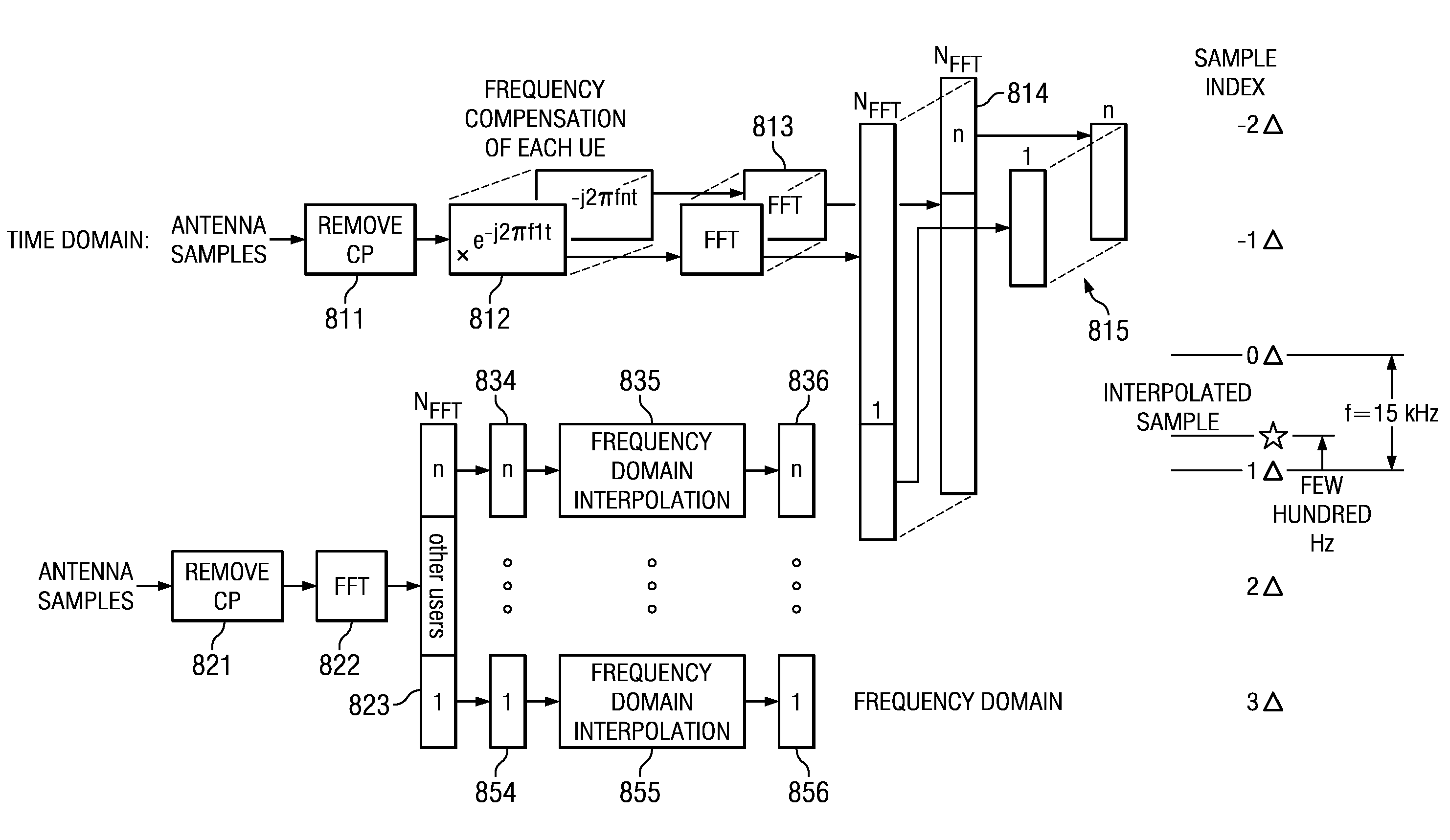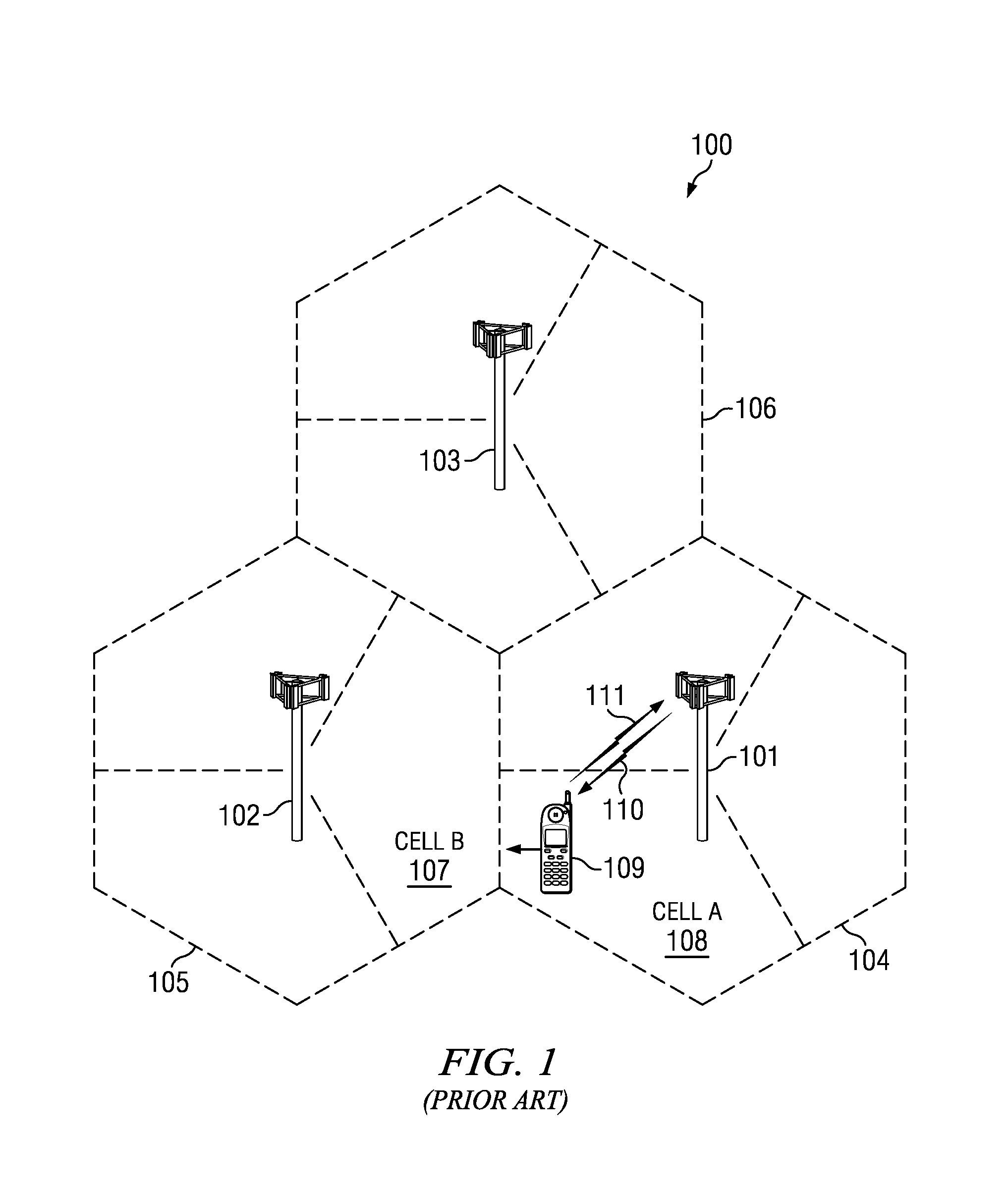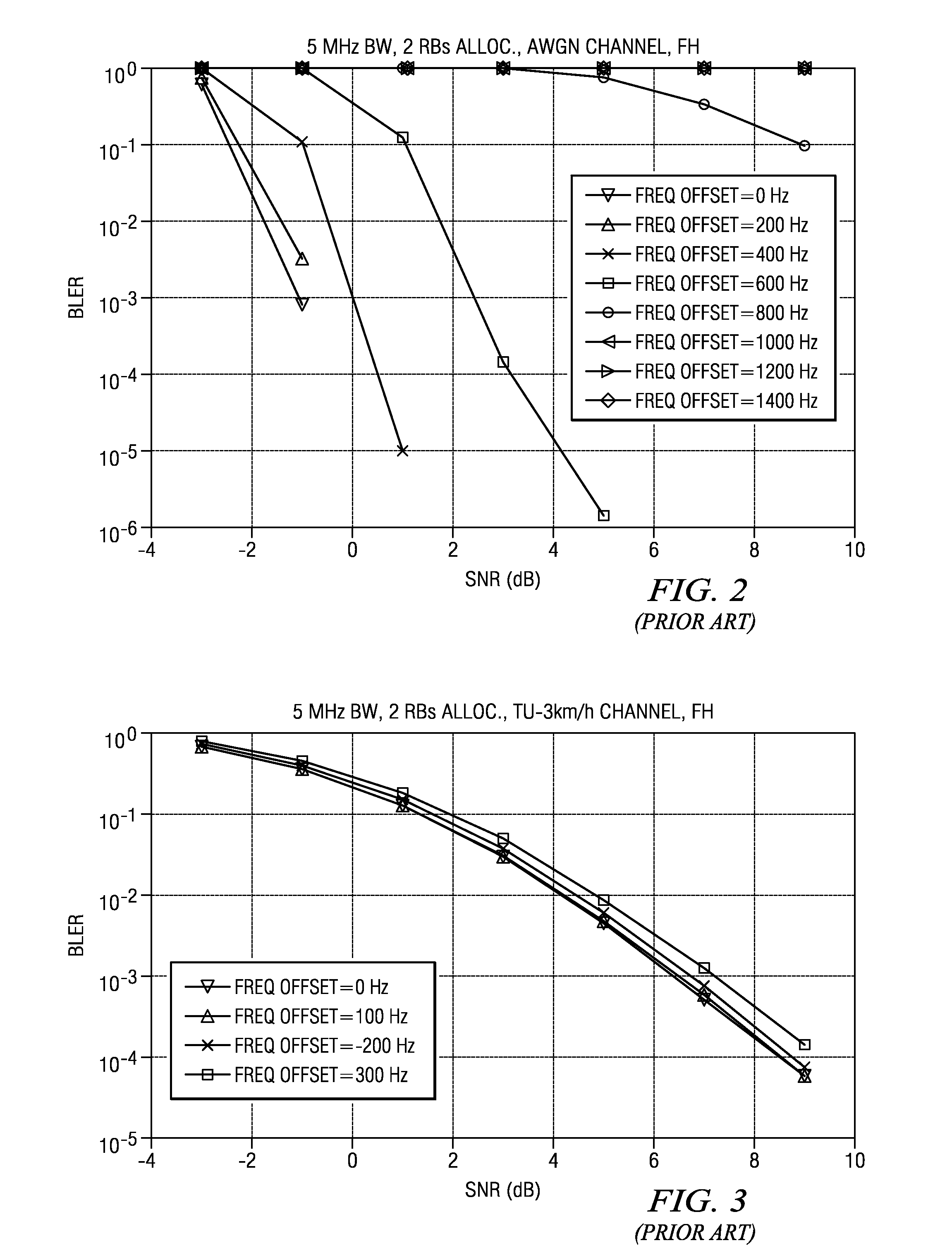Frequency Offset Estimation in Orthogonal Frequency Division Multiple Access Wireless Networks
a wireless network and frequency offset estimation technology, applied in the field of wireless communication, can solve the problem that the state-of-the-art does not satisfactorily address the high-end performance requirements
- Summary
- Abstract
- Description
- Claims
- Application Information
AI Technical Summary
Benefits of technology
Problems solved by technology
Method used
Image
Examples
Embodiment Construction
[0033]FIG. 7 illustrates the principles of the single carrier frequency division multiple access (SC-FDMA) UL transmitter and receiver of LTE. The SC-FDMA scheme is also referred to as discrete Fourier transform spread orthogonal frequency division multiplexing (DFT-SOFDM) and is an OFDMA system with subband carrier assignment scheme (CAS). For the UE transmitter coder 711 encodes received modulated symbols. These are transformed into the frequency domain by discrete Fourier transform (DFT) 712. These are filtered by filter 713. Block 714 combines the symbols with zeros to fill particular slots. Block 715 is an inverse Fast Fourier Transform (IFFT) which converts back into the time domain. Block 716 adds the cyclic prefix (CP) for transmission via the antenna (TxRF). For the base station (eNB) receiver block 721 removes the cyclic prefix. Block 722 is a Fast Fourier Transform (FFT). Filter 723 separates the channels corresponding to separate UEs. Processing continues with one channe...
PUM
 Login to View More
Login to View More Abstract
Description
Claims
Application Information
 Login to View More
Login to View More - R&D
- Intellectual Property
- Life Sciences
- Materials
- Tech Scout
- Unparalleled Data Quality
- Higher Quality Content
- 60% Fewer Hallucinations
Browse by: Latest US Patents, China's latest patents, Technical Efficacy Thesaurus, Application Domain, Technology Topic, Popular Technical Reports.
© 2025 PatSnap. All rights reserved.Legal|Privacy policy|Modern Slavery Act Transparency Statement|Sitemap|About US| Contact US: help@patsnap.com



